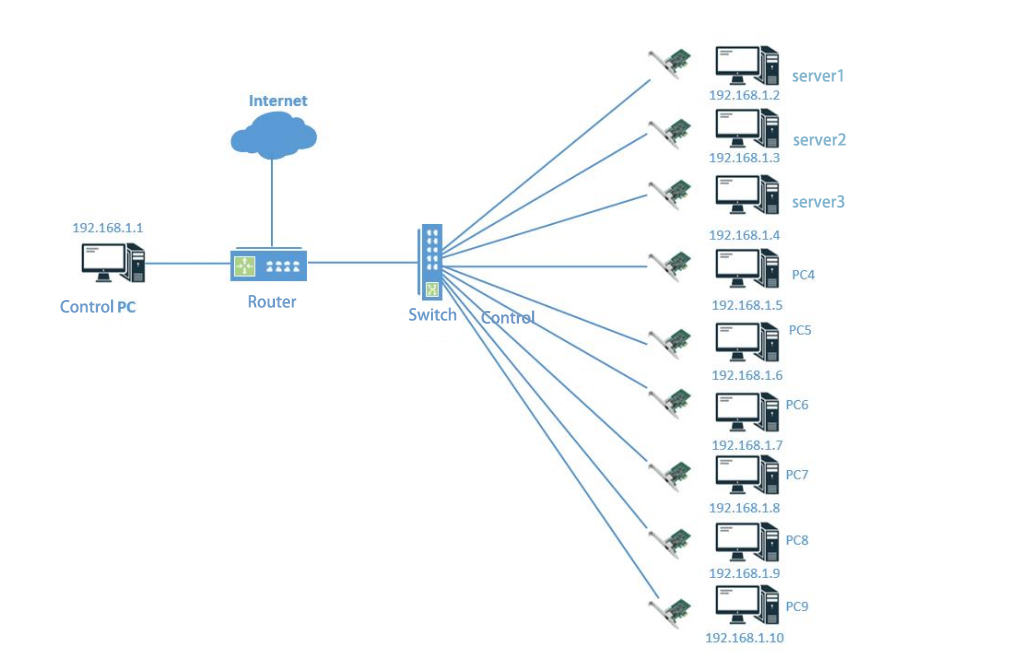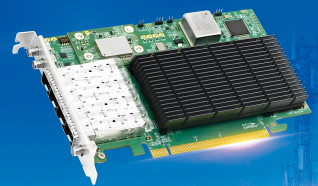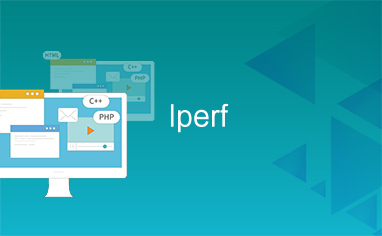





Today is digital age, the importance of network interfaces as the critical components connecting devices to networks is self-evident. Serving as the hardware/software interaction point for data exchange between devices and networks, network interfaces undertake key tasks such as protocol conversion, signal modulation, and data encapsulation.
1.Network Interface: The “Transportation Hub” of the Digital World
(1) Principles of Network Interface Technology
Network interfaces serve as the physical/logical channels for data transmission between devices and networks, with their performance directly impacting network speed, stability, and application scenarios. Core functions include:
Signal conversion: Electrical signals ↔ Optical signals (e.g., SFP modules)
Protocol parsing: Processing network protocols such as TCP/IP and UDP
Interference resistance design: Electromagnetic shielding and corrosion protection for industrial environments
(2) Hierarchy of Network Interfaces
The network interface resides between the physical layer and the data link layer of the OSI seven-layer model. The physical layer is responsible for transmitting bit streams over the physical medium, while the data link layer encapsulates the physical layer's bit streams into frames and performs error detection and correction. The network interface serves as a bridge in this process, converting application layer data packets into frame formats recognizable by the physical layer for transmission over the physical medium.
(3) Data Transmission Process
When an application (such as a browser) initiates a network request, data undergoes the following steps:
• The application layer generates a data packet.
• The packet is passed to the network interface via a socket.
• The network interface encapsulates the packet according to the configured protocol (e.g., TCP/IP) and adds necessary header information.
• The packet is converted into a frame and transmitted over the network medium (e.g., Ethernet cable or wireless signal) via the physical layer.
• At the receiving end, the physical layer receives the frame and reconverts it into a packet.
• The data link layer parses the frame, extracts the packet, and passes it to the network layer.
• The network layer continues processing the packet, ultimately delivering the data to the application.
Type | Features | LR-LINK Product Recommendations |
RJ45 Ethernet Port | 10Mbps–10Gbps, CAT6 cabling | LRES2006PT (Gigabit) |
SFP+ Fiber Optic Port | 10Gbps–100Gbps, low latency | LRES1016PF-SFP (10 Gigabit Ethernet) |
Wireless Interface | Bluetooth + Wi-Fi Mobile Deployment | LRIWF-AX210 (Industrial) |
(2) Classified by Host Interface
Type | Features | LR-LINK Product Recommendations |
PCIe | Expansion card form factor, requiring insertion into a motherboard slot | LRES1260PF-2QSFP112 |
M.2 | Compact card form factor, directly inserted into the motherboard's M.2 slot | LRES2221PF-SFP+ |
USB | External adapter form factor | LRSU9A11-8A |
3.Industrial Challenges & LR-LINK Solutions
Industrial environments differ vastly from typical office settings, imposing extreme demands on the stability, reliability, and longevity of network equipment. Key challenges and solutions can be summarized within the following framework:

(1) Challenge: Extreme Physical and Environmental Conditions
Extreme temperature fluctuations (-40°C to 85°C), dust, humidity, corrosive gases, vibration, and shock. LR-LINK features wide-temperature design: Components undergo rigorous selection to support extreme temperatures from -40°C to 85°C (e.g., LRES2037PT-2RJ45), ensuring stable operation in harsh environments like Northeast China's frigid winters or steel mill heat.
Enhanced Protection: Metal casing, corrosion-resistant PCB plating, and sealed connectors effectively shield against dust, moisture, and chemical corrosion.
Vibration-Resistant Design: Optimized PCB layout and reinforced interfaces pass vibration and shock testing, making it suitable for rail transit, mining machinery, and similar applications.
(2) Challenge: Harsh Electromagnetic Environment
Problem Description: High-power motors, inverters, and relays within factories generate intense electromagnetic interference (EMI), causing network packet loss, interruptions, and even equipment damage.
LR-LINK Solution:
Premium Components: Utilizes industrial-grade network controllers (e.g., Intel I210) and high-precision clock crystals for superior interference resistance.
Superior PCB Design & Shielding: Multi-layer PCB design with isolated power and signal planes. Comprehensive metal shielding and filtering circuits effectively suppress radiated and conducted interference. Interfaces feature ESD protection (typically ≥15KV) to prevent surge breakdown.
(3)Challenge: 24/7 Uninterrupted Operation
Issue Description: Industrial automation systems demand “zero downtime” networking; any outage risks production halts and significant economic losses.
High-Reliability Design: Utilizes all-solid-state capacitors and long-life components, achieving Mean Time Between Failures (MTBF) of hundreds of thousands of hours.
Link Redundancy: Supports IEEE 802.3ad (LACP) link aggregation and teaming functions, enabling automatic failover upon single-link failure for zero-impact switching.
Management Capabilities: Supports network management protocols like SNMP for real-time monitoring of NIC status and temperature, enabling predictive maintenance.
(4) Challenges: Real-time Performance and Determinism
Problem Description: Industrial control systems (e.g., PLCs, robots) demand microsecond (μs) latency and extreme determinism, which standard network protocols cannot fulfill.
Traditional Device Pain Points: Data traverses the operating system protocol stack, resulting in high latency and significant jitter.
LR-LINK Solution:
Protocol Hardware Offloading:
IEEE 1588 PTP: Hardware-level Precision Time Protocol provides nanosecond-level synchronization for all network devices, eliminating millisecond errors inherent in traditional NTP. This forms the foundation for multi-axis coordination and motion control. (Products like LRES2041PTI-2RJ45)
SR-IOV: Enables virtual machines to access hardware directly and securely, bypassing the virtualization layer to drastically reduce I/O latency. Supports industrial cloud and virtualized PLCs.
Low-latency design optimizes drivers and firmware, shortens packet processing paths, and ensures deterministic responses.
Network interface technology is evolving from “universal connectivity” toward specialized, scenario-based solutions. Through industrial-grade design (wide temperature range/vibration resistance/real-time protocols) and multi-scenario adaptability, LR-LINK delivers highly reliable, high-performance, and highly compatible connectivity solutions for smart manufacturing, energy, transportation, and other sectors.
